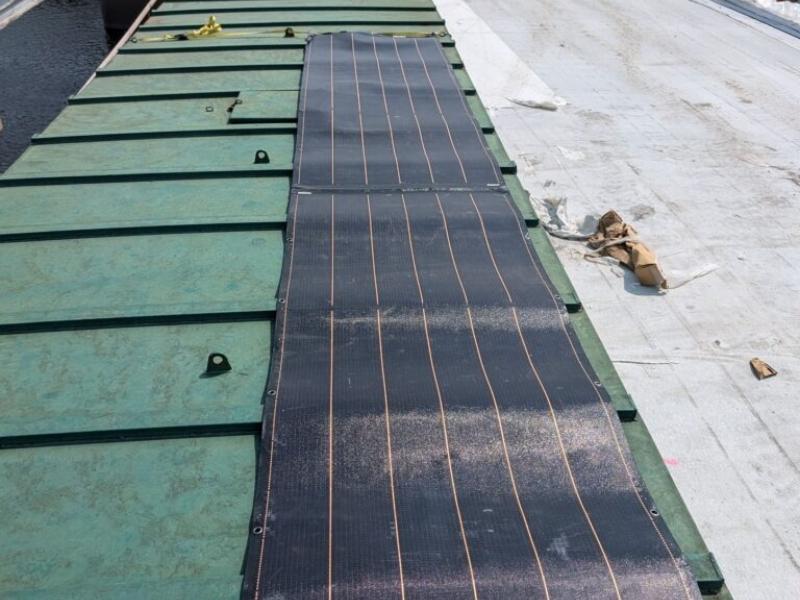
Provincial utility Hydro-Quebec is asking power producers to build 3,000 megawatts (MW) of solar energy by 2035, in an effort to diversify its electric power mix.
The first tranche of bids will add 300 MW, with a maximum capacity of 25 MW per project, and Hydro-Quebec is hoping to have these facilities connected to the existing grid by 2029. Applicants must submit a bid by March 31, 2026.
This is the first time the organization has done such a tender and Hydro-Quebec is anxious to see who responds.
“It could be private industries, could be community-based; First Nations as well. What we’re actually hoping for is having projects that will maximize economic generation in Quebec,” Cendrix Bouchard, media relations advisor with Hydro-Quebec, told Sustainable Biz Canada.
“We decided to be more ambitious regarding solar power. We realized that we underestimated it in the last few years, and a very important part of our new orientation is the fact that the cost of solar power has decreased steadily over the last years.”
Why Hydro-Quebec is looking to solar energy
Solar panel costs have dropped 90 per cent over the last 15 years, he said, and are projected to decrease a further 40 to 50 per cent by 2035. The utility estimates the cost to produce energy from solar is currently $0.08 to $0.11 per kilowatt-hour.
The plan is to start modestly, Bouchard explained.
“We’re starting with smaller scale projects, 25 MW, and we’re actually looking for projects that are going to be connected on our distribution network, so it reduces the cost of connection between those projects and the network.”
Projects also must avoid agricultural zones, he said.
“We’ve experimented with a couple solar farms that we do own, and total, they’re about 9.5 MW, which is, in Quebec, roughly the equivalent consumption for about 1,000 households and we determined that solar power is well adapted for Quebec,” Bouchard said.
Quebec receives 20 per cent more sun than Germany, according to Bouchard, which currently generates 81,000 MW of solar power.
The fact that the province is regularly snow-covered during winter can be considered an advantage for solar cells.
“(Solar panels) do work with the snow actually because the sun reflects on the snow and they produce (energy) on both sides. It’s a bit of a win-win situation and snow is not a problem either, because it actually melts on the solar panel . . . it’s a bit of self-cleaning situation.”
By deploying bifacial panels — that have solar cells on both sides — Quebec is well-suited to deploying such technology, Bouchard said.
Despite that advantage, the rollout could be complicated due to Quebec's particularly cold winters, short days and the fact that most people heat homes with electric baseboards.
“Of course, solar power is not available at that moment because we’re talking about, very early mornings in January, February or late night: it’s dark outside, although there is a complementarity between solar power and our hydroelectric dams, given the fact that when we are having solar power on the network, we can actually heat the water in order to use it later on to produce electricity,” Bouchard said.
It’s not the first experience the province has with a solar farm. In 2021, the Lac‑Mégantic microgrid was opened, which was partially a response to the deadly 2013 crude oil tanker train disaster.
Incentives for solar
In addition to tendering for more facilities, the province will offer financial incentives for homeowners and commercial building owners to install panels on roofs.
“We’re looking at 125,000 (clients) for 2035. It’s a big scaling up, because to give you some context, we have 1,000 clients right now that are equipped with solar power panels in Quebec,” Bouchard said.
The utility hasn’t finalized the level of financial assistance, which it hopes to begin offering in 2026, but it estimated homeowners can save as much as 30 per cent on electricity costs or $500 per home per year.
The overall goal is to provide more “resilience” in the electricity grid, according to Bouchard.
“We already have a lot of hydroelectricity of course, wind power as well. Now we’re adding solar panels.”
Hydro-Quebec is not only expanding its solar capacity: “We’ve announced in the last couple years that we’ve shown interest and acquired some more wind power, so it’s something that’s really increasing in Quebec.”
“We have strong wind capacity,” he said.










